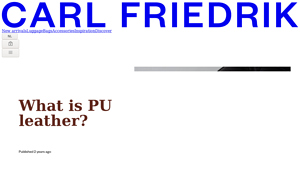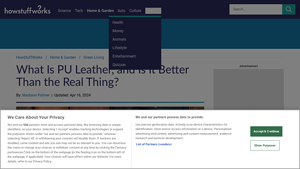Introduction: Navigating the Global Market for pu leather
In today’s competitive landscape, sourcing high-quality PU leather products poses a significant challenge for international B2B buyers. With the growing demand for sustainable and cost-effective alternatives to genuine leather, understanding the nuances of PU leather is crucial for making informed purchasing decisions. This comprehensive guide delves into various types of PU leather, their applications across industries, and practical strategies for vetting suppliers, ensuring that you find the best products for your needs.
As buyers from regions like Africa, South America, the Middle East, and Europe—such as Saudi Arabia and Brazil—navigate the complexities of the global market, this resource equips you with the insights necessary to discern quality and value. We will explore critical factors such as cost implications, the environmental impact of PU leather production, and strategies for assessing supplier reliability. By providing a clear understanding of the advantages and limitations of PU leather, this guide empowers you to make choices that align with your business goals while fostering sustainable practices.
Stay ahead in your procurement process with actionable insights that will enhance your sourcing strategy and contribute to your bottom line. Whether you are looking to expand your product line or enhance your current offerings, our guide serves as an essential tool for navigating the intricate world of PU leather.
Table Of Contents
- Top 5 Pu Leather Manufacturers & Suppliers List
- Introduction: Navigating the Global Market for pu leather
- Understanding pu leather Types and Variations
- Key Industrial Applications of pu leather
- 3 Common User Pain Points for ‘pu leather’ & Their Solutions
- Strategic Material Selection Guide for pu leather
- In-depth Look: Manufacturing Processes and Quality Assurance for pu leather
- Practical Sourcing Guide: A Step-by-Step Checklist for ‘pu leather’
- Comprehensive Cost and Pricing Analysis for pu leather Sourcing
- Alternatives Analysis: Comparing pu leather With Other Solutions
- Essential Technical Properties and Trade Terminology for pu leather
- Navigating Market Dynamics and Sourcing Trends in the pu leather Sector
- Frequently Asked Questions (FAQs) for B2B Buyers of pu leather
- Strategic Sourcing Conclusion and Outlook for pu leather
- Important Disclaimer & Terms of Use
Understanding pu leather Types and Variations
| Type Name | Key Distinguishing Features | Primary B2B Applications | Brief Pros & Cons for Buyers |
|---|---|---|---|
| 100% PU Leather | Completely synthetic, vegan-friendly, colorful | Furniture, fashion accessories | Pros: Cost-effective, easy to clean. Cons: Less durable, can look artificial. |
| Bicast Leather | Real leather backing with a PU coating | Upholstery, automotive interiors | Pros: More durable than 100% PU, retains some leather qualities. Cons: Limited lifespan compared to genuine leather. |
| Split Leather | Made from the fibrous part of hide, coated with PU | Footwear, bags | Pros: Affordable, offers a leather-like appearance. Cons: Less durable, may not age well. |
| Bonded Leather | Made from leftover leather scraps bonded with PU | Budget furniture, promotional items | Pros: Eco-friendly, lower cost. Cons: Prone to peeling, shorter lifespan. |
| Corrected Grain Leather | Leather that has been sanded and coated with PU | High-end fashion, luxury items | Pros: Attractive finish, retains some leather characteristics. Cons: Can be expensive, durability varies. |
What Are the Characteristics of 100% PU Leather?
100% PU leather is entirely synthetic and is often chosen for its affordability and versatility. It is widely used in furniture and fashion accessories due to its vibrant color options and ease of maintenance. For B2B buyers, the primary consideration is its cost-effectiveness; however, it is essential to note that this material can appear less authentic and may not withstand heavy use over time. Buyers should consider the intended application and whether the aesthetic is a priority over durability.
How Does Bicast Leather Compare to Other Types?
Bicast leather features a layer of genuine leather underneath a coating of PU, making it a more durable option than pure synthetic alternatives. It is commonly used in upholstery and automotive interiors, appealing to businesses looking for a balance between quality and cost. While it offers some of the aesthetic benefits of real leather, it is important for buyers to be aware that its lifespan is still limited compared to genuine leather, which may require more frequent replacements.
What Makes Split Leather a Viable Choice for B2B Buyers?
Split leather is produced from the fibrous layer of animal hides and is coated with PU to enhance its durability and appearance. This type is often utilized in footwear and bags, making it a practical choice for businesses in the fashion industry. While it offers a more leather-like look at a lower price point, its durability is inferior to other leather types, and it may not age gracefully, which is a consideration for long-term investments.

Illustrative image related to pu leather
Why Should Businesses Consider Bonded Leather?
Bonded leather consists of leather scraps bonded together with a polyurethane layer, making it an eco-friendly option for budget-conscious buyers. It is commonly used in promotional items and budget furniture. While it provides a more sustainable alternative, its tendency to peel and limited lifespan may deter businesses seeking longevity in their products. Buyers should assess the trade-offs between environmental benefits and durability when considering this option.
What Are the Advantages and Disadvantages of Corrected Grain Leather?
Corrected grain leather undergoes a process that involves sanding and coating with PU, resulting in a smooth finish that is visually appealing. It is often found in high-end fashion items and luxury goods, appealing to brands that prioritize aesthetics. However, this type can come at a higher price point, and its durability can vary significantly based on the manufacturing process. B2B buyers should weigh the visual appeal against the potential for wear and tear when making purchasing decisions.
Key Industrial Applications of pu leather
| Industry/Sector | Specific Application of PU Leather | Value/Benefit for the Business | Key Sourcing Considerations for this Application |
|---|---|---|---|
| Furniture Manufacturing | Upholstery for sofas and chairs | Cost-effective, durable, and easy to clean | Ensure compliance with international quality standards |
| Automotive | Interior trim and seating | Lightweight, customizable, and aesthetically appealing | Consider fire safety regulations and durability standards |
| Fashion & Apparel | Bags, wallets, and clothing | Versatile designs, lower production costs | Look for sustainable sourcing and ethical manufacturing |
| Footwear | Shoe uppers and linings | Affordable alternative to genuine leather | Assess wear resistance and comfort features |
| Sports Equipment | Equipment covers and protective gear | Water-resistant and easy to maintain | Verify performance standards and environmental impact |
How is PU Leather Used in Furniture Manufacturing?
In the furniture manufacturing sector, PU leather is widely utilized for upholstery on sofas, chairs, and other furniture items. Its cost-effectiveness allows manufacturers to offer stylish and durable options without the high price tag associated with genuine leather. For international B2B buyers, particularly from regions like Africa and the Middle East, sourcing PU leather that meets local quality standards is crucial. Buyers should prioritize suppliers who can provide certifications for durability and ease of maintenance, ensuring the longevity of their products in diverse climates.
What Role Does PU Leather Play in Automotive Interiors?
In the automotive industry, PU leather is frequently used for interior trim, seating, and dashboard coverings. Its lightweight nature contributes to overall vehicle efficiency, while its customizable appearance enhances the aesthetic appeal of car interiors. B2B buyers from Europe, particularly in countries like Germany and Italy, should consider suppliers that comply with stringent automotive safety regulations. Additionally, understanding the environmental impact of production processes is essential, as consumers increasingly demand sustainable practices.
How is PU Leather Transforming the Fashion & Apparel Industry?
PU leather has become a staple in the fashion and apparel sector, where it is used for bags, wallets, and clothing. Its versatility allows designers to create a wide range of styles, catering to various consumer preferences at a lower production cost. For buyers from South America and Africa, it’s important to source PU leather from manufacturers who prioritize ethical production practices and sustainable materials. This not only aligns with growing consumer consciousness but also enhances brand reputation in competitive markets.
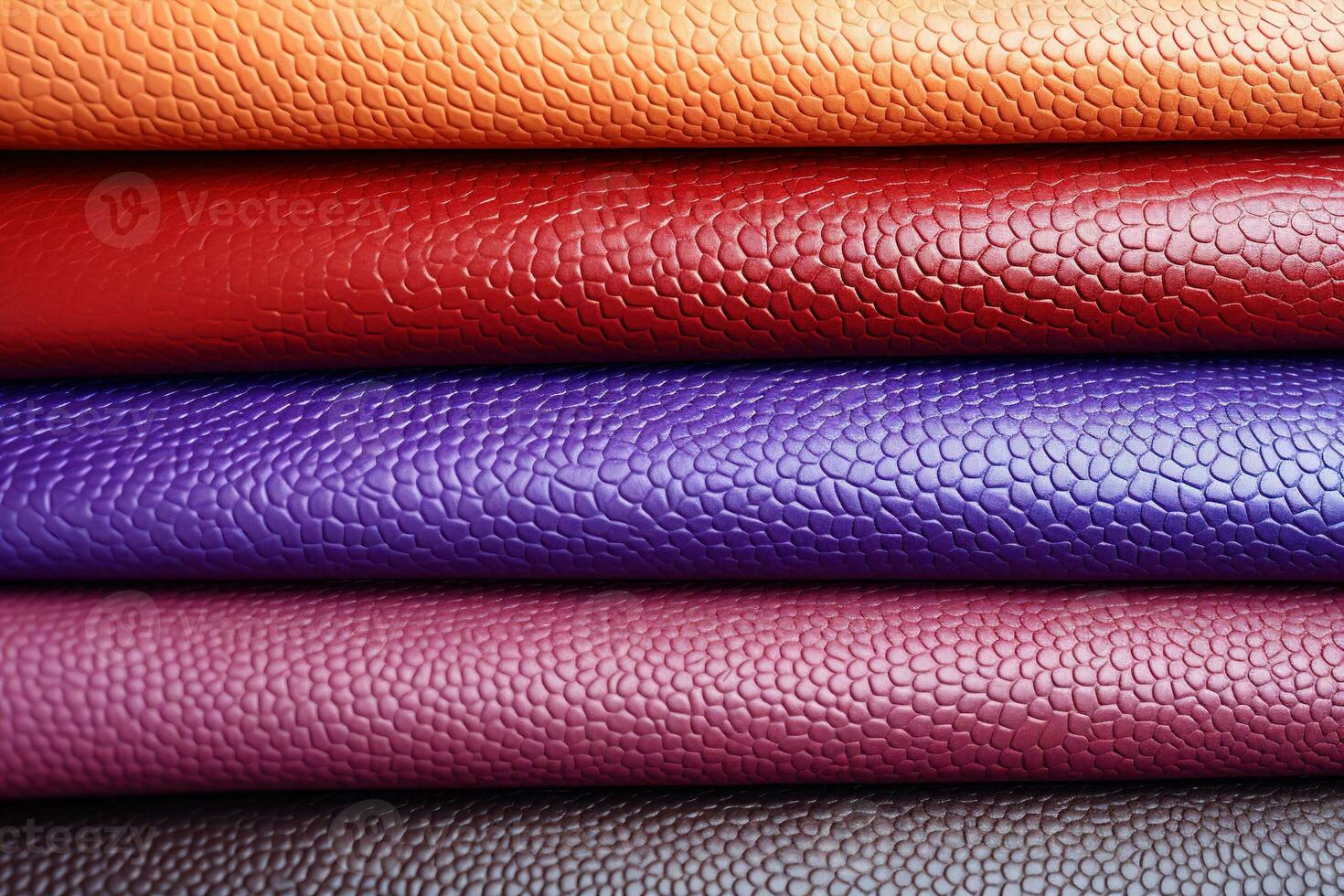
Illustrative image related to pu leather
Why is PU Leather Popular in Footwear Production?
In the footwear industry, PU leather is commonly used for shoe uppers and linings. It serves as an affordable alternative to genuine leather, providing similar aesthetics while being easier to clean and maintain. B2B buyers should focus on sourcing PU leather that offers high wear resistance and comfort, especially in regions like Brazil where footwear demands are high. Ensuring that suppliers can meet specific performance criteria is vital for producing high-quality footwear that meets consumer expectations.
How is PU Leather Applied in Sports Equipment?
PU leather is increasingly used in the sports equipment sector for protective gear and equipment covers. Its water-resistant properties and ease of maintenance make it ideal for products that face heavy wear and exposure to various elements. Buyers in this sector should ensure that the sourced PU leather meets performance standards and is compliant with environmental regulations, as consumers are becoming more aware of the ecological impact of their purchases. This consideration is particularly relevant for international buyers seeking to enhance their product offerings in competitive markets.
3 Common User Pain Points for ‘pu leather’ & Their Solutions
Scenario 1: Misleading Product Descriptions Leading to Poor Purchases
The Problem: B2B buyers often face the challenge of navigating misleading product descriptions when sourcing PU leather. Terms like “genuine leather” or “leather-like” can create confusion, leading to the purchase of products that do not meet the desired quality or durability standards. This issue is particularly prevalent when buyers are under pressure to meet deadlines and may not have the time to conduct thorough research, resulting in costly returns and unhappy customers.
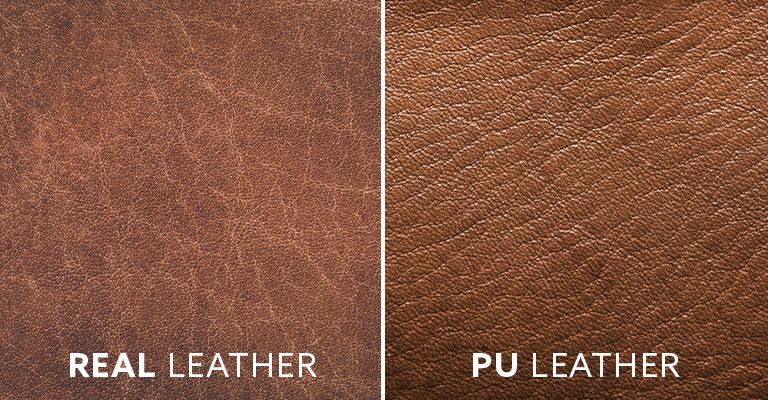
Illustrative image related to pu leather
The Solution: To avoid being misled, buyers should establish clear sourcing guidelines that emphasize transparency in product labeling. It’s crucial to request detailed product specifications from suppliers, including the exact composition of the material (e.g., whether it is 100% PU leather or contains other elements). Buyers can also create a checklist to compare different suppliers, focusing on terms that clearly define the product’s quality and authenticity. Additionally, engaging in direct communication with manufacturers to inquire about their materials can further ensure that the products align with the company’s standards and customer expectations.
Scenario 2: Durability Concerns Affecting Customer Satisfaction
The Problem: One of the significant pain points associated with PU leather is its durability. B2B buyers often find that products made from PU leather can crack, peel, and wear out much faster than expected, leading to customer dissatisfaction and increased warranty claims. This can be particularly problematic for businesses that rely on high-quality materials for their reputation, such as furniture retailers or fashion brands.
The Solution: To mitigate durability issues, buyers should prioritize sourcing high-quality PU leather from reputable manufacturers known for their rigorous quality control processes. It’s advisable to request samples to test the material’s resilience before making bulk purchases. Furthermore, buyers can look for PU leather that incorporates advanced technology or additives designed to enhance durability, such as those that provide a protective coating. Training sales staff to communicate the care requirements for PU leather products can also improve customer satisfaction and reduce the likelihood of returns.
Scenario 3: Environmental Concerns Impacting Brand Reputation
The Problem: With increasing scrutiny on environmental sustainability, B2B buyers are often confronted with the challenge of sourcing PU leather that aligns with eco-friendly practices. Many PU leather products are made from non-biodegradable materials and may be produced using processes that release harmful chemicals into the environment. This not only affects brand reputation but can also deter environmentally conscious customers.
The Solution: Buyers can address these concerns by seeking suppliers who are committed to sustainable practices in the production of PU leather. This includes sourcing materials that are free from harmful chemicals and ensuring that the manufacturing processes adhere to environmental regulations. Implementing a sustainability policy that emphasizes the importance of eco-friendly materials can guide procurement decisions. Moreover, buyers should consider investing in certifications or partnerships with organizations that promote sustainable leather alternatives. By doing so, companies can not only enhance their brand image but also appeal to a growing segment of consumers who prioritize sustainability in their purchasing decisions.
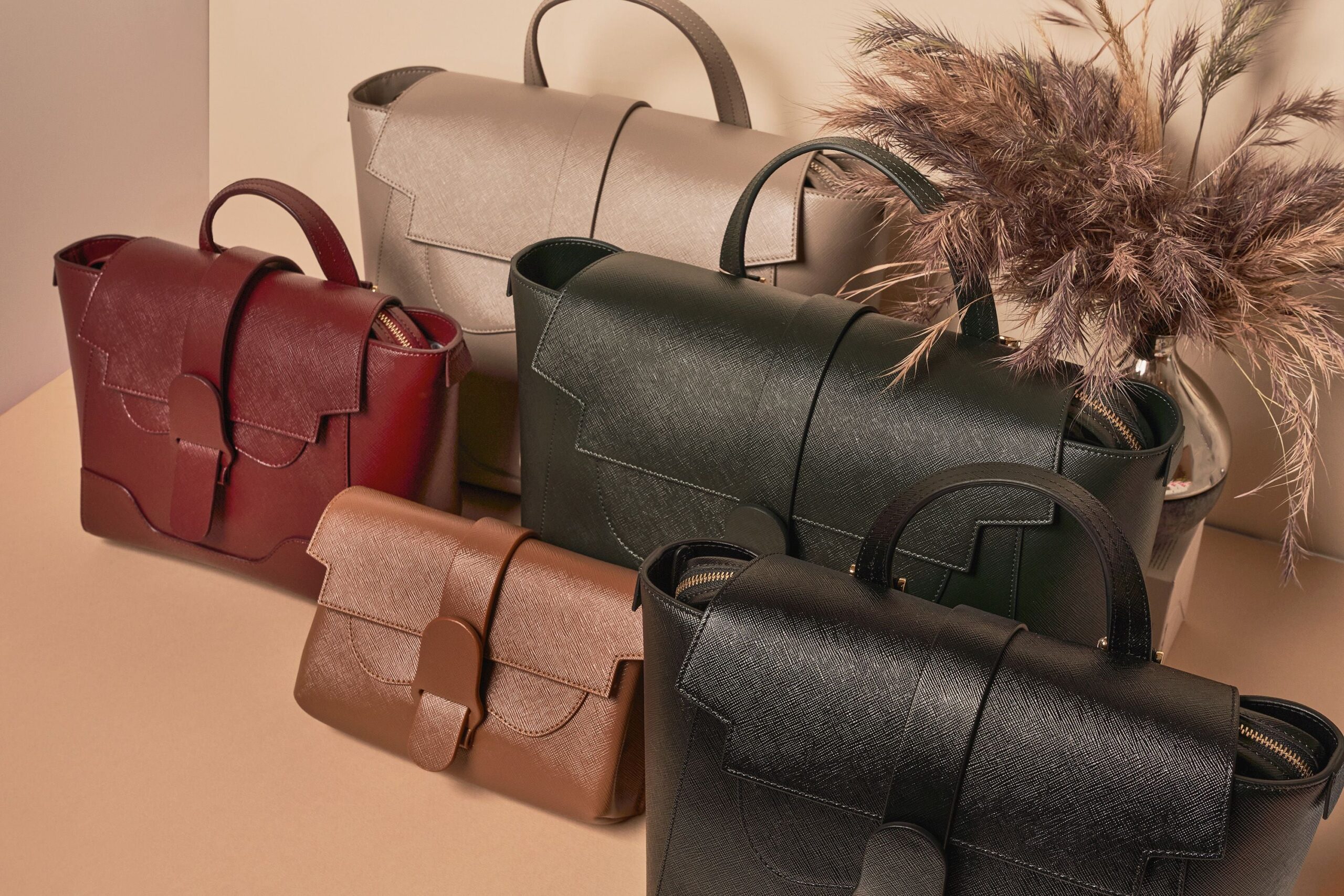
Illustrative image related to pu leather
In summary, addressing these common pain points—misleading product descriptions, durability concerns, and environmental impacts—requires a proactive approach in sourcing practices. By implementing clear guidelines, fostering supplier relationships, and prioritizing sustainability, B2B buyers can enhance their procurement strategies and ultimately provide better value to their customers.
Strategic Material Selection Guide for pu leather
What Are the Key Materials Used in PU Leather Production?
PU leather, or polyurethane leather, is a synthetic alternative to genuine leather that is widely used in various applications, including furniture, fashion, and automotive interiors. Understanding the materials that comprise PU leather is essential for B2B buyers, particularly those operating in diverse markets such as Africa, South America, the Middle East, and Europe. Below, we analyze several common materials utilized in PU leather production, focusing on their properties, advantages, disadvantages, and specific considerations for international buyers.
What Are the Key Properties of Polyurethane in PU Leather?
Polyurethane is the primary polymer used in the creation of PU leather. It is known for its flexibility and versatility. Key properties include:
- Temperature Resistance: Polyurethane can withstand a range of temperatures, making it suitable for various climates.
- Water Resistance: PU leather does not absorb water, which enhances its cleaning ease and suitability for humid environments.
- Chemical Resistance: It exhibits good resistance to many chemicals, although prolonged exposure to harsh solvents can degrade the material.
Pros and Cons: The primary advantage of polyurethane is its affordability and ease of manufacturing. However, it is less durable than genuine leather, often leading to cracking and peeling over time. This can affect the lifespan of products made from PU leather, necessitating more frequent replacements.
How Do Fabric Backings Affect PU Leather Performance?
Many PU leather products incorporate a fabric backing, such as polyester or cotton, to enhance structural integrity.
- Key Properties: Fabric backings provide additional strength and flexibility. They can also improve breathability, although PU leather is generally less breathable than genuine leather.
- Pros and Cons: The use of fabric backing increases durability and comfort, but it can also add to the manufacturing complexity and cost. Depending on the backing material, the overall environmental impact may vary, particularly if non-recyclable fabrics are used.
What Are the Environmental Considerations for PU Leather?
Environmental impact is a significant concern when selecting PU leather materials. The production of PU leather involves petroleum-based products, which are non-biodegradable.
- Key Properties: The manufacturing process often releases volatile organic compounds (VOCs), which can be harmful to both health and the environment.
- Pros and Cons: While PU leather is marketed as a more sustainable alternative to genuine leather, its environmental footprint raises questions. Buyers must consider the lifecycle of PU leather products and their disposal options.
What Compliance Standards Should International Buyers Consider?
For B2B buyers in regions like Africa, South America, the Middle East, and Europe, compliance with local and international standards is crucial. Common standards include ASTM (American Society for Testing and Materials), DIN (Deutsches Institut für Normung), and JIS (Japanese Industrial Standards).
- Key Properties: Compliance with these standards ensures product safety and quality, which is essential for market acceptance.
- Pros and Cons: Adhering to compliance standards may increase production costs but is necessary for market entry and consumer trust. Buyers should seek suppliers who can demonstrate adherence to these standards.
Summary Table of PU Leather Materials
| 素材 | Typical Use Case for PU Leather | Key Advantage | Key Disadvantage/Limitation | Relative Cost (Low/Med/High) |
|---|---|---|---|---|
| Polyurethane | Furniture, fashion accessories | Cost-effective and versatile | Less durable; prone to cracking | 低い |
| Fabric Backing (Polyester/Cotton) | Upholstery, bags | Increases durability and comfort | Adds complexity and cost | Medium |
| Eco-friendly Polyurethane | Sustainable fashion items | Reduced environmental impact | Still petroleum-based; not fully biodegradable | Medium |
| Bonded Leather | Low-cost furniture and accessories | Combines leather and PU for cost savings | Limited lifespan; may peel | 低い |
This strategic material selection guide serves to equip international B2B buyers with the insights needed to make informed decisions regarding PU leather products, taking into account their specific market requirements and sustainability goals.
In-depth Look: Manufacturing Processes and Quality Assurance for pu leather
What Are the Main Stages in the Manufacturing Process of PU Leather?
The manufacturing process of PU leather involves several key stages: material preparation, forming, assembly, and finishing. Understanding these stages is crucial for B2B buyers to ensure quality and consistency in the products they source.
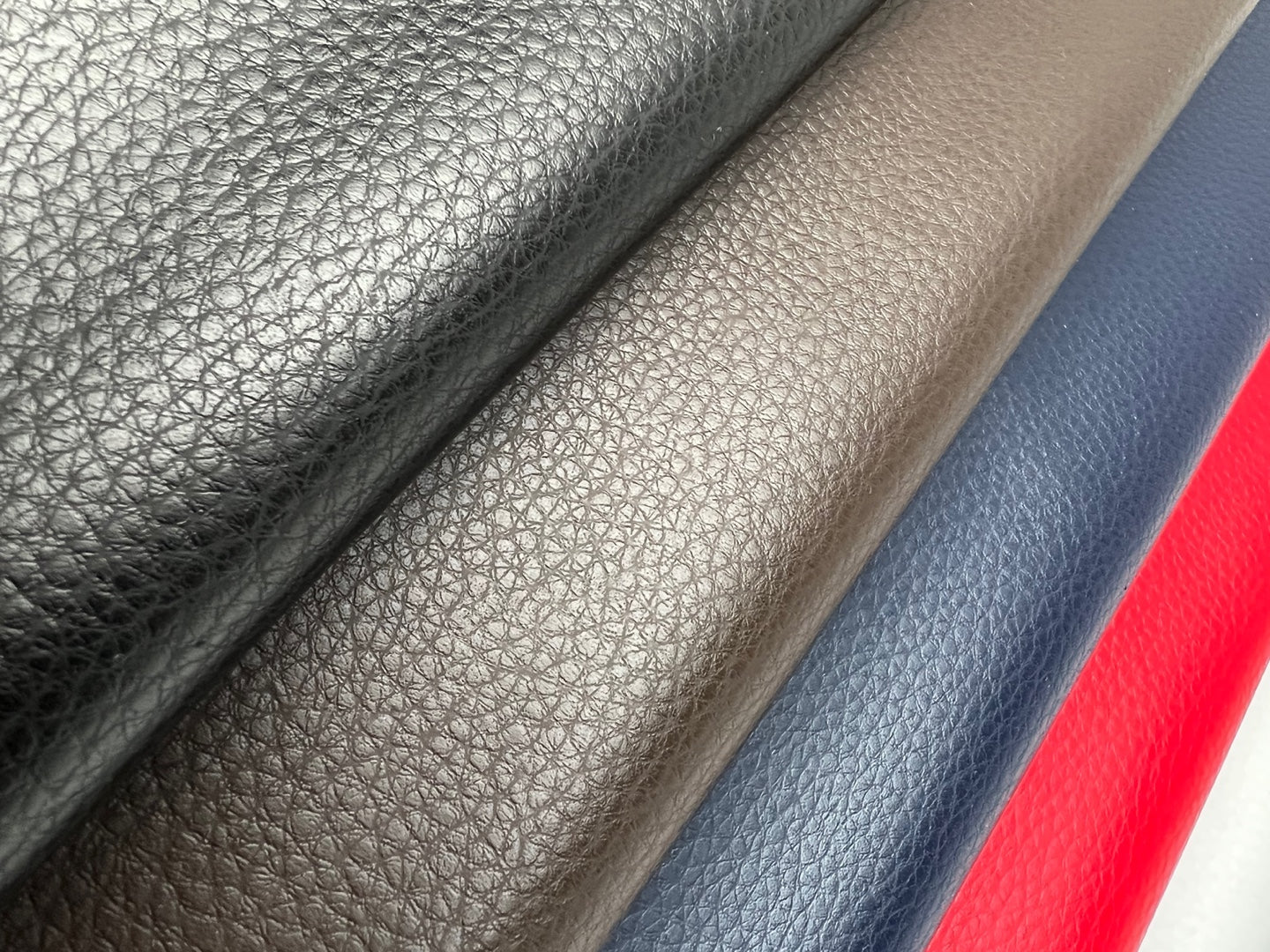
Illustrative image related to pu leather
How Is Material Prepared for PU Leather Production?
The first step in producing PU leather is the preparation of the base material, typically a fabric made from polyester or nylon. This fabric serves as the substrate for the polyurethane coating. During this stage, the fabric is treated to enhance its adhesion properties and to ensure it can withstand the subsequent layers of polyurethane. This treatment may involve cleaning, dyeing, and applying primers to promote better bonding with the polyurethane.
What Techniques Are Used in the Forming Stage of PU Leather?
The forming stage involves the application of polyurethane to the prepared fabric. Two primary techniques are commonly employed: direct coating and lamination.
-
Direct Coating: In this method, liquid polyurethane is directly applied to the fabric, creating a bond as it cures. This technique allows for the creation of various textures and finishes, mimicking the appearance of genuine leather.
-
Lamination: This process involves adhering a layer of polyurethane film to the fabric, providing a more uniform thickness and enhanced durability. Lamination can also involve additional layers for aesthetic effects, such as embossing or printing patterns that resemble natural leather grains.
How Does the Assembly Process Work for PU Leather Products?
After forming, the PU leather material is cut and assembled into the final product. This stage involves several steps:

Illustrative image related to pu leather
-
Cutting: The PU leather sheets are cut into specific patterns according to the product design. Precision is critical to minimize waste and ensure that the pieces fit together seamlessly.
-
Sewing: The cut pieces are then sewn together using specialized machines. The stitching quality plays a significant role in the overall durability of the finished product, with double stitching often employed in high-stress areas.
-
Quality Checks: During assembly, manufacturers may conduct preliminary quality checks to ensure that the dimensions and stitching meet specified standards.
What Finishing Techniques Are Used in PU Leather Production?
The finishing stage is where the PU leather is given its final appearance and properties. This may involve several processes, including:
-
Surface Treatment: A protective coating may be applied to enhance water resistance and durability. This treatment can also improve the material’s aesthetic by giving it a glossy or matte finish.
-
Coloring and Printing: Dyes and inks are applied to achieve the desired color. Techniques such as digital printing allow for intricate designs and patterns to be printed directly onto the surface.
-
Final Inspection: Before packaging, a final inspection is conducted to ensure that the product meets the quality standards set by the manufacturer and any relevant international regulations.
What International Quality Assurance Standards Are Relevant for PU Leather?
Quality assurance is a critical component in the production of PU leather, ensuring that products meet safety, performance, and environmental standards. For B2B buyers, understanding these standards is essential for verifying supplier credibility.
Which International Standards Should B2B Buyers Consider?
-
ISO 9001: This standard outlines the requirements for a quality management system. Manufacturers certified under ISO 9001 demonstrate their commitment to quality and continuous improvement, making them reliable partners for B2B transactions.
-
CE Marking: For products sold within the European Economic Area, CE marking indicates compliance with health, safety, and environmental protection standards. Buyers in Europe should ensure their suppliers meet these requirements.
-
REACH Compliance: This European Union regulation addresses the production and use of chemical substances, ensuring that PU leather products are free from harmful chemicals that could impact human health and the environment.
What Are the Key Quality Control Checkpoints in PU Leather Manufacturing?
Quality control checkpoints are integral to maintaining product quality throughout the manufacturing process. B2B buyers should be familiar with these checkpoints to ensure their suppliers adhere to high standards.
What Are the Common Quality Control Checkpoints?
-
Incoming Quality Control (IQC): This initial checkpoint involves inspecting raw materials for defects or inconsistencies before production begins. This step is crucial for ensuring that only high-quality materials are used.
-
In-Process Quality Control (IPQC): During the manufacturing process, IPQC involves monitoring operations and conducting tests at various stages. This can include checking the adhesion of the polyurethane coating, the accuracy of cutting patterns, and the quality of stitching.
-
Final Quality Control (FQC): After the product is fully assembled, FQC involves a thorough inspection of the finished goods to ensure they meet all specifications and standards. This may include visual inspections, physical tests for durability, and checks for compliance with safety standards.
How Can B2B Buyers Verify Supplier Quality Control Practices?
B2B buyers must take proactive steps to verify the quality control practices of their suppliers. This can help mitigate risks associated with sourcing PU leather products.
What Steps Can Buyers Take to Ensure Supplier Compliance?
-
Conduct Audits: Regular audits of suppliers can provide insights into their manufacturing processes and quality assurance practices. This includes reviewing their adherence to international standards and their internal quality control protocols.
-
Request Quality Reports: Suppliers should be able to provide documentation that outlines their quality control measures, including results from IQC, IPQC, and FQC processes.
-
Third-Party Inspections: Engaging third-party inspection services can offer an objective evaluation of the supplier’s manufacturing practices and product quality. This is particularly important for buyers in regions where local regulations may differ from international standards.
What Are the Quality Control Nuances for International B2B Buyers?
When sourcing PU leather from international suppliers, particularly from regions like Africa, South America, the Middle East, and Europe, buyers should be aware of specific quality control nuances.
How Do Regional Differences Impact Quality Control?
-
Regulatory Variations: Different countries may have varying regulations regarding material safety, environmental impact, and product standards. B2B buyers must familiarize themselves with these regulations to ensure compliance.
-
Cultural Attitudes Toward Quality: The perception of quality can vary significantly across regions. Buyers should assess suppliers’ commitment to quality assurance in the context of their local market practices.
-
Sustainability Considerations: Increasingly, B2B buyers are prioritizing sustainability in their sourcing decisions. Understanding suppliers’ environmental practices and their compliance with sustainability certifications can influence purchasing decisions.
By comprehensively understanding the manufacturing processes and quality assurance practices for PU leather, B2B buyers can make informed decisions that align with their quality standards and business objectives.
Practical Sourcing Guide: A Step-by-Step Checklist for ‘pu leather’
はじめに
This sourcing guide aims to provide B2B buyers with a comprehensive checklist for procuring PU leather, a popular synthetic material used in various industries including furniture, fashion, and automotive. By following these steps, you can ensure that you make informed decisions that align with your quality, sustainability, and budgetary requirements.
Step 1: Define Your Technical Specifications
Clearly outline the specific requirements for your PU leather. This includes attributes such as thickness, texture, color, and intended use (e.g., upholstery, footwear). Having a well-defined set of specifications will help you communicate effectively with potential suppliers and avoid misalignment later in the procurement process.
- Consider the End Use: Different applications may require variations in durability or aesthetics.
- Assess Compliance Needs: Ensure that your specifications align with any industry standards or regulations.
Step 2: Research and Identify Reputable Suppliers
Begin by compiling a list of potential suppliers known for producing PU leather. Utilize industry directories, trade shows, and online marketplaces to identify reputable manufacturers.
- Check Reviews and Testimonials: Look for feedback from previous clients to gauge reliability and product quality.
- Examine Market Presence: A supplier with a strong market presence is often more reliable.
Step 3: Evaluate Supplier Certifications
Before engaging with a supplier, verify their certifications to ensure compliance with quality and environmental standards. Common certifications include ISO 9001 for quality management and OEKO-TEX for sustainability.
- Request Documentation: Ask for proof of certifications to validate claims.
- Understand Material Safety: Ensure that the PU leather is free from harmful chemicals that could affect health and safety.
Step 4: Request Samples
Request samples of PU leather from shortlisted suppliers to assess quality firsthand. This is a crucial step that allows you to evaluate texture, durability, and color accuracy.
- Conduct Quality Tests: Perform basic tests like flexibility and scratch resistance on samples.
- Compare Across Suppliers: Analyzing samples from different suppliers can help you make an informed choice.
Step 5: Negotiate Pricing and Terms
Once you’ve narrowed down your options, initiate discussions regarding pricing and terms. Make sure to consider not just the cost per unit, but also minimum order quantities, payment terms, and shipping costs.
- Discuss Long-term Relationships: Explore options for bulk discounts or long-term contracts for better pricing.
- Clarify Return Policies: Understand the terms for returns or exchanges in case the product does not meet your standards.
Step 6: Verify Production Capabilities
Ensure that your chosen supplier can meet your production needs in terms of volume and timelines. This is especially important if you have tight deadlines or large orders.
- Assess Manufacturing Processes: Inquire about the technology and methods used in production to gauge efficiency.
- Evaluate Scalability: Confirm whether the supplier can scale production as your business needs grow.
Step 7: Establish a Quality Control Process
Develop a quality control plan that outlines how you will monitor the quality of PU leather received from your supplier. This could include periodic inspections and testing procedures.
- Define Inspection Criteria: Set clear standards for what constitutes acceptable quality.
- Communicate Expectations: Make sure your supplier understands your quality expectations to prevent issues down the line.
By following this structured checklist, you can streamline the sourcing process for PU leather and ensure that you select a supplier that meets your business needs while minimizing risks.
Comprehensive Cost and Pricing Analysis for pu leather Sourcing
What Are the Key Cost Components in PU Leather Sourcing?
When sourcing PU leather, understanding the cost structure is crucial for making informed purchasing decisions. The primary cost components include:
-
Materials: The main ingredient in PU leather is polyurethane, often coated over a fabric base. Prices can vary depending on the quality of the polymer and the type of fabric used. Higher-quality PU leather that mimics the look of genuine leather may command a premium.
-
Labor: Labor costs encompass the wages of workers involved in the manufacturing process. Regions with lower labor costs can significantly affect the overall price. However, it’s essential to balance cost savings with potential quality concerns.
-
Manufacturing Overhead: This includes expenses related to facility maintenance, utilities, and administrative costs. Efficient manufacturing processes can help reduce these overheads, positively impacting pricing.
-
Tooling: Custom molds and equipment needed for production can add to initial costs. Businesses should consider these factors, especially if they require specific designs or patterns that necessitate unique tooling.
-
Quality Control (QC): Ensuring product quality is vital, especially for B2B transactions. Companies may invest in stringent QC processes to mitigate risks associated with defective products, which can impact pricing.
-
Logistics: Shipping costs, including freight charges, customs duties, and insurance, must be factored into the total cost. Geographic location plays a significant role, with international shipping often adding complexity and expense.
-
Margin: Suppliers will include a profit margin in their pricing. Understanding the typical margins in the industry can help buyers assess whether a quoted price is fair.
How Do Price Influencers Affect PU Leather Costs?
Several factors can influence the pricing of PU leather, particularly for international B2B buyers:
-
Volume/MOQ: Minimum order quantities (MOQ) can significantly affect pricing. Larger orders typically result in lower per-unit costs due to economies of scale. Buyers should negotiate MOQs that align with their needs.
-
Specifications and Customization: Custom designs or specific material requirements can increase costs. Buyers should clearly communicate their specifications to avoid unexpected charges.
-
Materials and Quality Certifications: Higher quality PU leather, often certified for safety or environmental standards, may come at a premium. Buyers should weigh the benefits of certifications against their budget constraints.
-
Supplier Factors: Supplier reputation, reliability, and location can all impact pricing. Established suppliers with proven track records may charge more but can offer better quality assurance and service.
-
Incoterms: Understanding international commercial terms is crucial for pricing negotiations. Terms like FOB (Free on Board) or CIF (Cost, Insurance, and Freight) will dictate who bears shipping costs and risks, influencing overall expenses.
What Are the Best Negotiation Tips for B2B Buyers?
When negotiating prices for PU leather, especially in international markets, consider the following strategies:
-
Research Market Rates: Familiarize yourself with typical prices for PU leather in your target regions. This knowledge can empower you during negotiations.
-
Leverage Volume Discounts: If you anticipate significant future purchases, communicate this to suppliers. They may offer better rates to secure long-term contracts.
-
Evaluate Total Cost of Ownership (TCO): Look beyond initial pricing. Consider durability and maintenance costs associated with PU leather. A lower-priced option may not be cost-effective if it requires frequent replacement.
-
Be Transparent About Your Needs: Open communication regarding your requirements can help suppliers tailor their offerings and pricing to meet your needs effectively.
-
Consider Local Suppliers: Sourcing from local suppliers in regions like Africa or South America can reduce shipping costs and improve delivery times, potentially leading to better pricing.
What Should Buyers Keep in Mind Regarding Pricing Nuances?
International B2B buyers should be aware of several pricing nuances:
-
Currency Fluctuations: Exchange rate volatility can impact costs, particularly for buyers in Africa and South America dealing with suppliers in Europe or the Middle East. Consider using forward contracts to mitigate risks.
-
Import Tariffs and Duties: These can vary widely by country and affect the total landed cost of PU leather. Buyers should research applicable tariffs in their region to avoid unexpected expenses.
-
Cultural Differences: Understanding cultural nuances in negotiation styles can enhance communication and lead to more favorable terms.
Disclaimer
Prices for PU leather can vary significantly based on several factors, including market conditions, supplier pricing strategies, and the specifics of each transaction. This analysis provides a general overview and should be used as a guideline rather than a definitive pricing structure. Always obtain current quotes and conduct thorough due diligence before finalizing any purchase agreements.
Alternatives Analysis: Comparing pu leather With Other Solutions
Introduction: Exploring Alternatives to PU Leather
In the realm of synthetic materials, PU leather stands out as a popular choice for various applications, including furniture, fashion, and accessories. However, as B2B buyers seek sustainable, durable, and cost-effective solutions, it is essential to evaluate alternatives that may better meet their needs. This analysis compares PU leather with two viable alternatives: genuine leather and vegetable-tanned leather, providing insights into their performance, cost, maintenance, and ideal use cases.
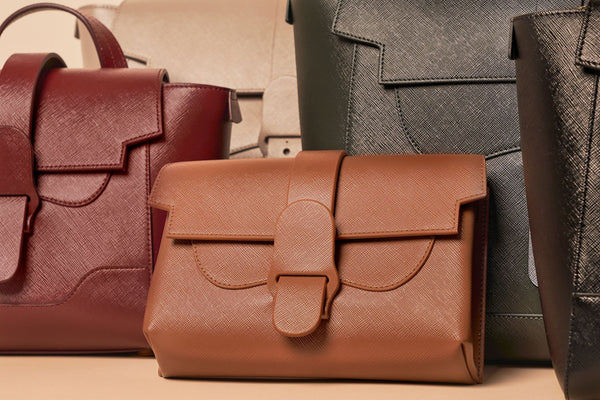
Illustrative image related to pu leather
Comparison Table
| Comparison Aspect | Puレザー | Genuine Leather | Vegetable-Tanned Leather |
|---|---|---|---|
| Performance | Moderate durability; prone to cracking and peeling | High durability; develops a unique patina over time | Excellent durability; ages beautifully with use |
| Cost | Low initial cost; frequent replacements needed | Higher initial cost; long lifespan justifies investment | Mid-range cost; long-term investment value |
| Ease of Implementation | Easily mass-produced; widely available | Requires skilled craftsmanship; less available in mass markets | Requires skilled artisans; limited availability |
| Maintenance | Low maintenance; easy to clean but prone to wear | Moderate maintenance; needs conditioning and care | Requires regular maintenance; but easy to clean |
| Best Use Case | Budget-friendly products; fashion items | Premium products; luxury goods, high-end furniture | Eco-conscious consumers; artisanal products |
Detailed Breakdown of Alternatives
Genuine Leather: What Are Its Strengths and Weaknesses?
Genuine leather is derived from animal hides, offering unparalleled durability and a unique aesthetic that improves with age. Its ability to develop a rich patina over time adds character to products, making it a favored choice for high-end goods. However, the higher initial cost and ethical concerns associated with animal products may deter some buyers. Additionally, genuine leather requires more maintenance, including conditioning to keep it supple and prevent drying out.
Vegetable-Tanned Leather: Is It a Sustainable Option?
Vegetable-tanned leather is an eco-friendly alternative to PU leather, utilizing natural tannins from plant sources for processing. This method not only minimizes environmental impact but also results in a durable product that can last for decades. Like genuine leather, it develops a unique patina over time, enhancing its aesthetic appeal. However, the production process can be time-consuming and labor-intensive, which may contribute to higher costs. Buyers seeking sustainable and ethically produced materials will find vegetable-tanned leather a compelling choice.
Conclusion: How to Choose the Right Leather Solution for Your Business
When selecting between PU leather and its alternatives, B2B buyers should assess their specific needs, budget constraints, and sustainability goals. PU leather may be suitable for cost-sensitive projects requiring quick production and minimal maintenance. However, for businesses looking to invest in long-lasting products that resonate with eco-conscious consumers, genuine or vegetable-tanned leather presents a more durable and sustainable option. Evaluating these factors will help ensure that the chosen material aligns with both the brand’s values and customer expectations.

Illustrative image related to pu leather
Essential Technical Properties and Trade Terminology for pu leather
What Are the Key Technical Properties of PU Leather?
Understanding the technical properties of PU leather is essential for B2B buyers to make informed purchasing decisions. Here are some critical specifications that define the quality and usability of PU leather in various applications:
1. Material Composition
PU leather is primarily made from a thermoplastic polymer, which is a synthetic material that mimics the look and feel of genuine leather. The quality of PU leather can vary significantly based on the ratio of polyurethane to the underlying fabric, typically polyester or cotton. Higher polyurethane content usually translates to better durability and appearance. For B2B buyers, knowing the material composition helps in assessing the product’s suitability for specific applications, such as upholstery or fashion accessories.
2. Thickness
The thickness of PU leather is an important specification that affects its durability and usability. Typically measured in millimeters, thicker PU leather is often more durable and resistant to wear and tear, making it suitable for high-traffic areas like furniture upholstery. Buyers should consider thickness as a key indicator of longevity and performance, especially for products that will undergo frequent use.
3. Tensile Strength
Tensile strength refers to the maximum amount of tensile (pulling) stress that the material can withstand before failing. In the context of PU leather, higher tensile strength indicates a more robust product that can resist tearing and stretching. For B2B buyers, evaluating tensile strength is crucial for ensuring that the PU leather can endure the demands of its intended application, whether in furniture, bags, or automotive interiors.
4. Water Resistance
One of the advantages of PU leather is its inherent water resistance, making it easier to clean and maintain compared to genuine leather. This property is particularly important for industries where spills are likely, such as hospitality and automotive. Understanding the level of water resistance can help buyers gauge the maintenance requirements and lifespan of the product.
5. Color Fastness
Color fastness is a measure of how well the color of the material withstands exposure to light, washing, and rubbing. High color fastness ensures that the PU leather maintains its aesthetic appeal over time, which is particularly important in fashion and interior design. Buyers should look for PU leather with high color fastness ratings to ensure long-lasting vibrancy in their products.
What Are Common Trade Terms Related to PU Leather?
Navigating the B2B landscape requires familiarity with industry-specific terminology. Here are some essential terms that buyers should know when dealing with PU leather:
1. OEM (Original Equipment Manufacturer)
An OEM is a company that produces parts or equipment that may be marketed by another manufacturer. In the context of PU leather, OEM suppliers can create custom products based on a buyer’s specifications, which is crucial for companies looking to brand their products uniquely.
2. MOQ (Minimum Order Quantity)
MOQ refers to the smallest quantity of a product that a supplier is willing to sell. Understanding MOQ is vital for B2B buyers as it helps in budgeting and inventory management. Suppliers of PU leather may set MOQs based on production costs, so buyers should negotiate these terms to align with their business needs.
3. RFQ (Request for Quotation)
An RFQ is a document sent to suppliers to request pricing and terms for specific products. When sourcing PU leather, submitting an RFQ allows buyers to compare offers from multiple suppliers, ensuring they get the best value for their investment.
4. Incoterms (International Commercial Terms)
Incoterms are a set of international rules that define the responsibilities of buyers and sellers in shipping contracts. Familiarity with Incoterms is essential for B2B transactions involving PU leather, as they dictate who is responsible for shipping, insurance, and tariffs, thereby affecting overall costs.
5. Lead Time
Lead time refers to the time taken from placing an order to receiving it. For buyers of PU leather, understanding lead times is crucial for inventory planning and meeting project deadlines. This can vary based on the supplier’s location, production capacity, and shipping logistics.
By grasping these technical properties and trade terms, B2B buyers can better navigate the complexities of sourcing PU leather, ensuring they make informed decisions that align with their business objectives.
Navigating Market Dynamics and Sourcing Trends in the pu leather Sector
What Are the Key Drivers Influencing the PU Leather Market?
The PU leather market is witnessing significant growth driven by various global factors, including rising consumer demand for affordable, versatile, and aesthetically pleasing alternatives to genuine leather. In regions such as Africa and South America, economic constraints lead many businesses to seek cost-effective materials, making PU leather an attractive option for manufacturers and retailers alike. Additionally, the Middle East and Europe are seeing a shift towards more sustainable products, influencing sourcing decisions. As environmental concerns grow, companies are increasingly interested in materials that offer a balance between affordability and eco-friendliness.
Emerging B2B technologies are playing a crucial role in sourcing trends, with digital platforms streamlining the procurement process. Businesses are leveraging e-commerce solutions to connect with suppliers globally, facilitating faster transactions and reducing lead times. Furthermore, advancements in manufacturing technologies are enabling the production of higher-quality PU leather, enhancing durability and aesthetic appeal, which can improve market competitiveness.
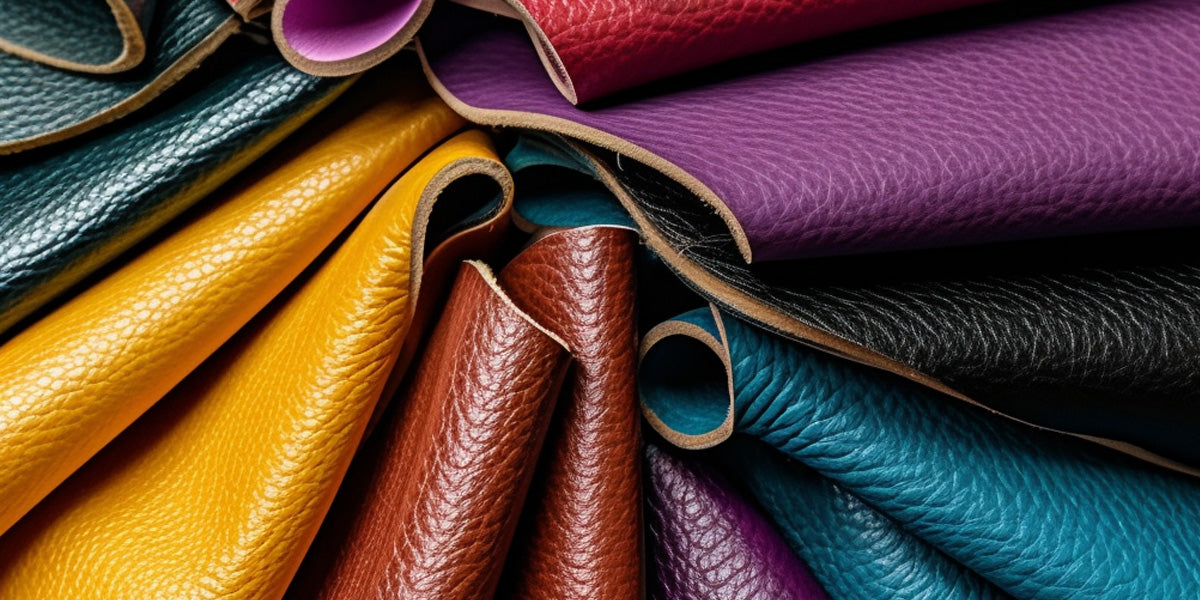
Illustrative image related to pu leather
How Are Sustainability and Ethical Sourcing Shaping the PU Leather Industry?
The environmental impact of PU leather is a critical concern for B2B buyers, particularly as global awareness of sustainability rises. Traditional PU leather is petroleum-based and non-biodegradable, contributing to pollution and waste. Consequently, buyers are increasingly prioritizing ethical sourcing practices and seeking suppliers who adhere to environmentally friendly standards.
To address these concerns, some manufacturers are adopting innovative approaches, such as using recycled materials or biodegradable alternatives in their PU leather production. Certifications like Global Organic Textile Standard (GOTS) and OEKO-TEX® are becoming essential for suppliers, assuring buyers of the sustainability of their products. By choosing PU leather that meets these certifications, international buyers can align their sourcing strategies with their corporate social responsibility goals, enhancing their brand image and appeal in environmentally conscious markets.
What Is the Historical Context of PU Leather and Its Evolution?
PU leather was developed in the mid-20th century as a synthetic alternative to genuine leather, initially gaining popularity for its affordability and ease of maintenance. Over the decades, the production processes have evolved significantly, with advancements in technology improving the quality and variety of PU leather available on the market.
As consumer preferences shifted towards ethical and sustainable options in recent years, the PU leather industry has responded by innovating in material composition and manufacturing practices. Today, businesses are not only focused on cost but also on the long-term impacts of their sourcing decisions. This evolution reflects a broader trend in the textile industry, where sustainability and ethical considerations are becoming central to product development and supply chain management.
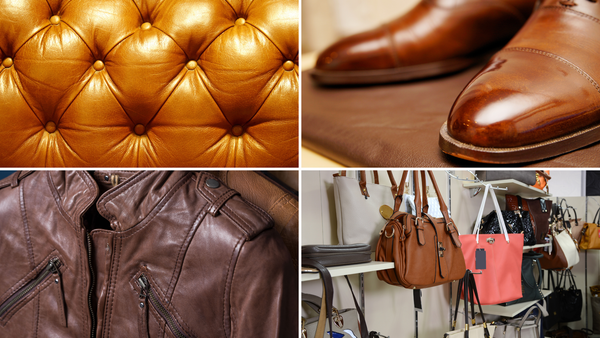
Illustrative image related to pu leather
In conclusion, as B2B buyers navigate the complexities of the PU leather market, understanding these dynamics will be essential for making informed sourcing decisions that align with both economic and ethical standards.
Frequently Asked Questions (FAQs) for B2B Buyers of pu leather
-
How do I choose the right PU leather supplier for my business needs?
Selecting the right PU leather supplier involves assessing their production capabilities, quality control processes, and certifications. Look for suppliers with a proven track record in your target market and positive reviews from other B2B clients. Request samples to evaluate the material’s texture, durability, and overall quality. Additionally, consider their ability to provide customization options, such as colors and finishes, as well as their compliance with international standards for sustainability and safety. -
What factors should I consider when negotiating payment terms with a PU leather supplier?
When negotiating payment terms, consider factors such as the order size, supplier reliability, and your cash flow. Common payment methods include letters of credit, PayPal, or bank transfers. Aim for terms that allow you to secure favorable prices while maintaining cash flow flexibility. Discuss options for partial payments upon order confirmation and the balance upon delivery to mitigate risks. Ensure the terms are documented clearly in your contract to avoid disputes later. -
What is the minimum order quantity (MOQ) for PU leather products?
Minimum order quantities (MOQ) for PU leather can vary widely among suppliers, typically ranging from 500 to 1,000 square meters or equivalent units. Smaller manufacturers may offer lower MOQs, which can be beneficial for startups or businesses testing new products. Always confirm the MOQ with your supplier, as larger orders may yield better pricing and terms. It’s also wise to discuss the potential for future flexibility if your demand increases. -
How can I ensure the quality of PU leather before finalizing my order?
To ensure PU leather quality, request detailed specifications from the supplier, including material composition, thickness, and durability tests. Conduct a pre-shipment inspection or hire a third-party quality assurance service to verify the product against your standards. Ask for certifications that demonstrate compliance with safety and environmental regulations. Additionally, consider establishing a quality agreement that outlines your expectations and procedures for handling defects or discrepancies. -
What are the shipping logistics considerations when sourcing PU leather internationally?
When sourcing PU leather internationally, consider shipping options, lead times, and customs regulations in your destination country. Choose a reliable freight forwarder experienced in handling similar products. Determine whether you need air or sea freight based on urgency and cost. Understand the import duties and taxes applicable to PU leather in your region to avoid unexpected costs. Clear communication with your supplier about shipping schedules can help mitigate delays. -
Is PU leather a sustainable option for businesses looking to reduce their environmental impact?
While PU leather is often marketed as a more sustainable alternative to genuine leather, it has drawbacks, including being petroleum-based and non-biodegradable. When considering sustainability, assess the supplier’s manufacturing practices, including the use of eco-friendly chemicals and waste management systems. Some suppliers may offer PU leather made from recycled materials or with reduced environmental impact. It’s essential to verify these claims through documentation or third-party certifications. -
How does the durability of PU leather compare to genuine leather in a B2B context?
PU leather typically has a shorter lifespan compared to genuine leather, lasting around 6 to 24 months under regular use. It is more susceptible to cracking, peeling, and wear, making it less suitable for high-traffic applications. In contrast, genuine leather can last for decades, developing a unique patina over time. For businesses prioritizing longevity and return on investment, genuine leather may be a better choice despite the higher initial costs. -
What customization options are typically available for PU leather products?
Customization options for PU leather products can include various colors, textures, and finishes. Some suppliers may offer embossing or printing services for branding purposes. Discuss your specific requirements during initial conversations to ensure the supplier can meet your needs. Additionally, inquire about lead times for custom orders, as they can vary based on the complexity of the design and the supplier’s production capacity.
Top 5 Pu Leather Manufacturers & Suppliers List
1. Manuel Dreesmann – PU Leather Insights
Domain: manuel-dreesmann.com
Registered: 2017 (8 years)
Introduction: PU leather is a synthetic material made from polyurethane, often used as a cheaper alternative to genuine leather. It is less durable, can crack or peel over time, and may not be as environmentally friendly as other materials. The blog suggests avoiding PU leather due to these drawbacks.
2. Reddit – PU Leather Wallets
Domain: reddit.com
Registered: 2005 (20 years)
Introduction: PU leather wallets tend to crack and disintegrate with minimal use, leading to reliability issues. Real leather raises ethical concerns regarding its production, often sourced from China, and mass-market options may be poorly made. Alternatives like canvas are available but may stain easily. The user is seeking durable and affordable options for wallets, expressing dissatisfaction with current pro…
3. Carl Friedrik – PU Leather Products
Domain: carlfriedrik.com
Registered: 2016 (9 years)
Introduction: PU leather, also known as artificial or imitation leather, is made from polyurethane, a synthetic plastic. It is created by applying a PU resin coating to natural fabrics like nylon, cotton, or vinyl, mimicking the look and feel of animal leather. 100% PU leather is vegan-friendly, while PU applied to split leather (animal hide) is not. Benefits include being softer, lighter, UV resistant, easy to…
4. Decorative Fabrics Direct – PU Leather & Faux Leather
Domain: decorativefabricsdirect.com
Registered: 2004 (21 years)
Introduction: PU Leather & Faux Leather | Vinyl Upholstery Fabric. Terms: Free Shipping Coupon Code: SHIPFREE for most $199 orders. Available for wholesale purchase by the yard or full roll. Brands include Naugahyde, Omnova Boltaflex, Nassimi, and Spradling. Uses include furniture, automotive, marine, and commercial projects. Fabric types include Vinyl (PVC), Urethane, and Polycarbonate. Colors available: Black…
5. HowStuffWorks – PU Leather
Domain: home.howstuffworks.com
Registered: 1998 (27 years)
Introduction: PU (Polyurethane) leather is an affordable, vegan alternative to genuine leather, made from a type of plastic. It is 100% vegan and comes in two types: full-synthetic (totally vegan) and semi-synthetic (contains a natural leather base). PU leather is water-resistant, easy to clean, and suitable for upholstery in kitchens, bars, and fashion items like handbags and shoes. However, it lacks the authe…
Strategic Sourcing Conclusion and Outlook for pu leather
In navigating the complexities of the PU leather market, international B2B buyers must weigh the benefits and drawbacks of this synthetic material. PU leather offers cost-effective alternatives to genuine leather, with advantages such as water resistance and a wide range of colors. However, its susceptibility to wear and potential environmental concerns must not be overlooked. Understanding these factors is essential for making informed sourcing decisions that align with both budgetary constraints and sustainability goals.
Strategic sourcing of PU leather can enhance supply chain efficiency while fostering long-term supplier relationships. Buyers from Africa, South America, the Middle East, and Europe should prioritize suppliers who demonstrate transparency in their manufacturing processes and material sourcing. This approach not only mitigates risks associated with product quality but also supports ethical practices in the industry.
As the demand for sustainable and innovative materials grows, the outlook for PU leather remains dynamic. Buyers are encouraged to explore partnerships that emphasize durability, safety, and eco-friendliness. Engaging with forward-thinking suppliers will position businesses for success in a competitive landscape. Make your sourcing decisions today to secure a sustainable and profitable future in the PU leather market.
Important Disclaimer & Terms of Use
⚠️ Important Disclaimer
The information provided in this guide, including content regarding manufacturers, technical specifications, and market analysis, is for informational and educational purposes only. It does not constitute professional procurement advice, financial advice, or legal advice.
While we have made every effort to ensure the accuracy and timeliness of the information, we are not responsible for any errors, omissions, or outdated information. Market conditions, company details, and technical standards are subject to change.
B2B buyers must conduct their own independent and thorough due diligence before making any purchasing decisions. This includes contacting suppliers directly, verifying certifications, requesting samples, and seeking professional consultation. The risk of relying on any information in this guide is borne solely by the reader.




